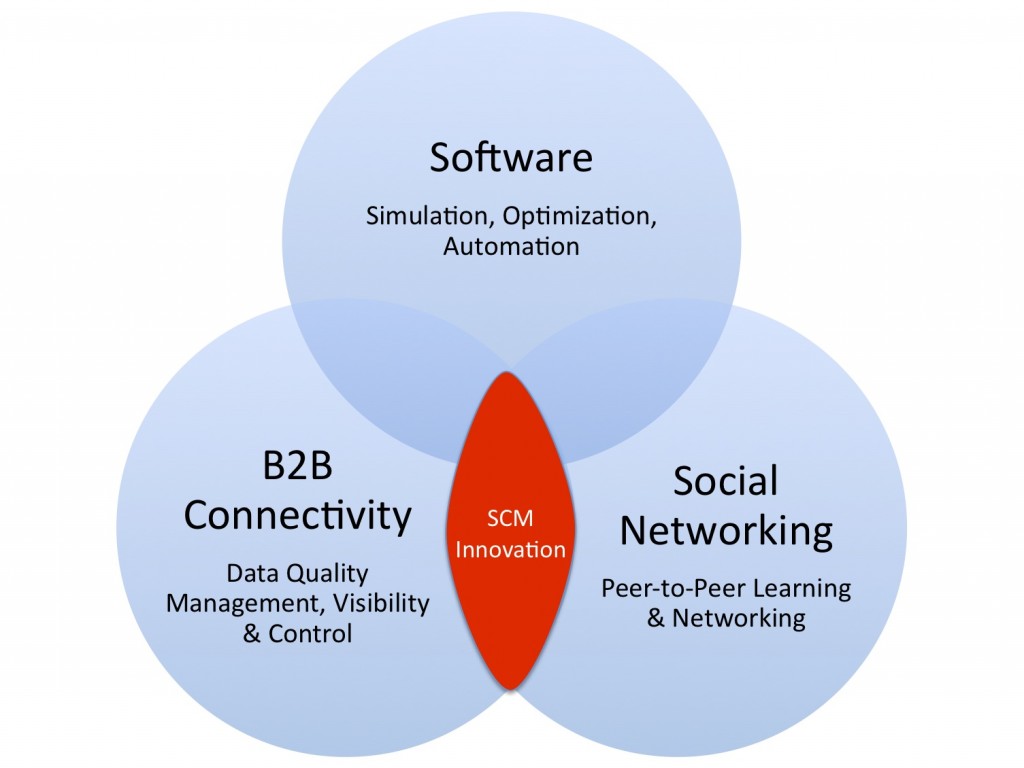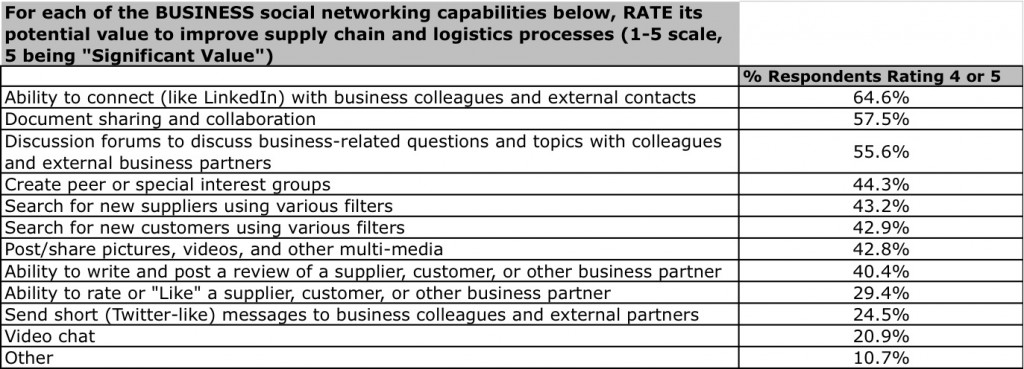The big news this week was Microsoft’s acquisition of LinkedIn for $26.2 billion. Is this the beginning of something big and transformative in the way we work and collaborate together or is it the beginning of another failed marriage between two tech companies?
Of course, only time will tell, but regardless of whether Microsoft and LinkedIn are the right partners, or whether they’re able to execute and make this a successful marriage, I believe their vision, as expressed by Microsoft CEO Satya Nadella in a Wall Street Journal article, is right on target:
Mr. Nadella said today’s work is split between tools workers use to get their jobs done, such as Microsoft’s Office programs, and professional networks that connect workers. The deal, he said, aims to weave those two pieces together.
“It’s really the coming together of the professional cloud and the professional network,” Mr. Nadella said in an interview on Monday.
In the supply chain realm, a similar “coming together” is taking place between enterprise software, business-to-business (B2B) connectivity, and (slowly, but ultimately) social networking. This convergence and the opportunities it creates for supply chain innovation and transformation is a big reason why investments in Supply Chain Operating Networks are on the rise.

As I wrote a couple of years ago in Where to Find Supply Chain Innovation:
The next phase of Supply Chain Operating Networks is about facilitating communication and collaboration between supply chain and logistics professionals — the people side of supply chain management. And it’s about providing those professionals with network-based business intelligence and analytics to help them make smarter decisions faster. Simply put, Supply Chain Operating Networks are becoming the business equivalent of Facebook and LinkedIn, enabling communities of trading partners to communicate, collaborate, and execute business processes in more efficient, scalable, and innovative ways.
While Microsoft and LinkedIn are big players in their respective domains, I believe it’s Supply Chain Operating Networks (SCONs) like GT Nexus, Elemica, Descartes, E2open, SAP Ariba and others that are in the best position to drive this convergence of enterprise software, B2B connectivity, and social networking in the supply chain. Two big questions, however, are whether SCONs have the technical resources and expertise to establish, enable, and grow a community of supply chain professionals, and more importantly, whether supply chain professionals are ready to embrace change — that is, embrace a different way of working, communicating, and collaborating with colleagues and trading partners.
Unless (or until) the answer to the latter question is yes, then nothing else matters.
Back in 2013, I conducted a web survey of 200+ supply chain professionals to get a pulse on the views and practices related to social networking in supply chain management. The results were published in a Supply Chain Management Review article titled The Social Side of Supply Chain Management. One of the survey questions was “For each of the BUSINESS social networking capabilities below, RATE its potential value to improve supply chain and logistics processes (1-5 scale, 5 being ‘Significant Value’).” As shown below, the survey respondents ranked “The ability to connect (like LinkedIn) with business colleagues and external contacts” number one, followed by “Document sharing and collaboration” and “Discussion forums to discuss business-related questions and topics with colleagues and external business partners.”

In short, two of the top three capabilities are related to peer-to-peer learning and networking, which underscores the role and importance of people-to-people communication in supply chain management; it also underscores part of the value Microsoft and LinkedIn see in their marriage.
But again, responding to a survey question is easy; actually embracing change and acting on it is much more difficult and unpredictable.
Social networking has been making inroads in the workplace for several years — see Microsoft’s acquisition of Yammer (despite its mixed results), Salesforce.com’s Chatter, Facebook at Work, IBM Verse, and in the supply chain realm, Macrolynk and Cloud Logistics. We’re also seeing social networking’s cousin, mobile technologies, playing a bigger role in the workplace too, with Apple’s partnerships with SAP and IBM as prime examples of what’s possible in the years ahead.
How far and how fast will Microsoft’s acquisition of LinkedIn push the needle forward in how we leverage social networking technologies to communicate and collaborate at work? The truth is that Microsoft does not have full control of the outcome. Neither does any other technology company. A lot depends on you and me and everyone else in the workplace. How far and how fast are we willing to go?
Author’s Note: Over the past few years, I’ve written many posts related to the role of social networking in supply chain management. Here are a few:
- Here Comes the Chief Network Effects Officer
- The Most Overlooked Cloud Opportunity
- Can Twitter Help You Make Smarter Supply Chain Decisions?
- Facebook for Supply Chain Communication and Collaboration?
- HP’s New Style of IT: The Social Supply Chain
- Where to Find Supply Chain Innovation
- Facebook Graph Search, Through a Supply Chain Lens
- The Perfect Answer to “What’s the ROI of Social Networking?”
- A Pulse on Social Networking for Supply Chain Management









